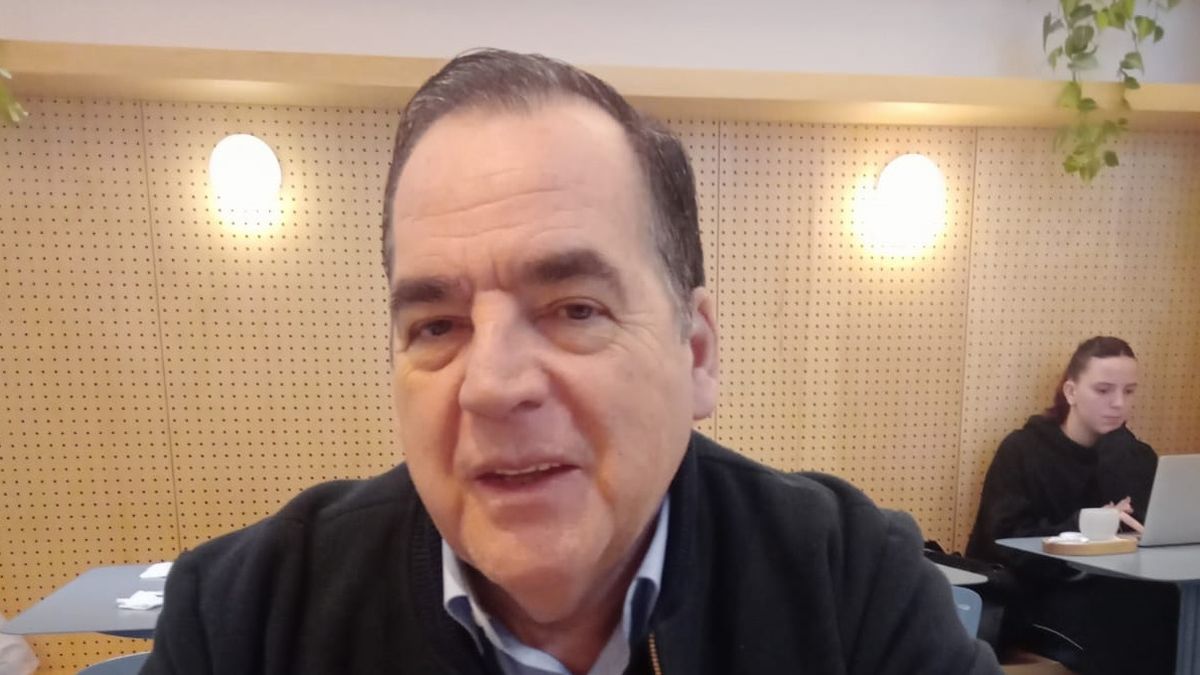Behind the military massacre of a town settled in a strategic area of the country, commercial and political interests, personal and private businesses, appear under the flag of freedom. This is what the Uruguayan writer Diego Fischer documents in “The price of betrayal” (Planet). fischer He came to present his new work and we spoke with him.
Journalist: What does the Paysandú massacre of 1865 have to do with Argentina, beyond the fact that Gardel sang of “the American Troy”?
Diego Fischer: A lot. Beyond that Gardel sang the verses of “Heroica Paysandú” by the Buenos Aires payador Gabino Ezeiza. The leaders of the two oriental armies that faced each other have deep Argentine roots, with the Argentines and with the Argentine struggles. In the conflict, the aggressor side, led by Venancio Flores, had the support of Bartolomé Mitre. The defense of Paysandú is a historical milestone, the defense until the last breath of the idea of independence. It was a massacre of those who, together with the leader Leandro Gómez, gave their lives to defend it.
DF: A greedy Brazil wanted to reinstall the Cisplatina Province, to once again take over what is now Uruguay. Something of great interest to the landowners of Rio Grande del Sur. For its part, the newborn Argentina, led by Miter and Sarmiento, wants to extend its sovereignty over the eastern territory. Gómez, as he had learned from Artigas, demanded the total independence of the countries, to then form the Great Homeland.
Q: Was Gómez the federal military man who supported Dorrego and confronted Lavalle?
DF: At the age of 16, his father, a rich merchant – who had 18 children, which is why there are so many Gómez in our countries – sent him to Leandro to run the general store in Buenos Aires. Here he meets Manuel Oribe, friend and ally of Juan Manuel de Rosas, who was living in exile. Oribe adopted him, initiated him in the military field, in politics and in Freemasonry. He makes it artistic. When Oribe, during the Great War, besieged Montevideo, he appointed the military man Leandro Gómez to be in charge of the northern departments, Salto and Paysandú. And Gómez in Paysandú carries out building works and makes decisions with a strong social commitment. It is at that moment that the uprising of Venancio Flores takes place.
Q.: It is launched in the Libertarian Revolution.
DF: In what he calls the Liberating Crusade, he copies that name so that people believe that his revolution is similar to those of our heroic 33 Orientales, when their purposes are different (the 33 led by Oribe and Lavalleja, went against the Brazilians to reincorporate the Eastern Band to the United Provinces of the Río de la Plata). Venancio Flores is guided by an excessive ambition for power. He doesn’t care what he leaves aside or what he gives up to achieve his goal of becoming dictator of Uruguay. He will make it, but it won’t last long.
Q.: Mitre, who is a friend of Flores, did he help you?
D.F.: I don’t know if they had friendship, but they had good treatment. Miter had met him during Rosas’ time when he was in exile in Montevideo. They had met during the Great War and both were active in the liberal Colorado Party. When Flores tells him about his Crusade, how he baptized it in a delirium of grandeur, even carrying banners like those of the Crusades, Miter tells him: what you are going to undertake is crazy, however, he gives you a boat. When Berro, the eastern president at the time, asks him about the Flores revolution, Miter tells him that he has nothing to do with it. However, he has to do with logistical facts. He gives Flores weapons, he doesn’t give them to her, he sells them to her. And Flores pays them with money that the Brazilian Barón de Tamandaré gives him after signing an agreement.
Q: What did that agreement consist of?
DF: The documents are printed in “The Price of a Betrayal.” The pact consists of three parts: Take Salto and Paysandú where the last forces of Oribe are, then take Oribe’s Montevideo and elevate Flores, and finally link the forces by adding those of Argentina and launch against Solano López’s Paraguay. in what would become the infamous War of the Triple Alliance.
Q: What interests move Brazil?
DF: Maintain slavery and be able to use the port and customs of Montevideo. First with Oribe, in 1824, and with Berro in 1860, slavery had been abolished and blacks fled in droves from Brazil towards the Banda Oriental. The ranchers of Río Grande del Sur, who saw that they were losing their free labor, asked Pedro II to fix that matter. And the emperor of Brazil ordered the Baron of Tamandaré, admiral of the national fleet, to take the fleet to the Río de la Plata. The enormous Brazilian troops accompanying Flores are commanded by sons of the most powerful landowners in Rio Grande do Sul, Barreto, Osorio, Mena Neto. Under the banner of the Freedom Revolution they went out in search of slaves.
Q.: What was happening with Paysandú at that time?
DF: It was an urbanized city, without poor people, with salting houses, a model port. Its prosperity offered a promising future. Despite its small population, it had vice-consuls from France, Spain, England, Argentina and Brazil. But, in the face of Flores’ advances, Montevideo has to defend itself with what it has left, Paysandú.
Q: How did Leandro Gómez do it?
DF: He turned Paysandú into a citadel of resistance. He gathered about a thousand men and asked them to swear “independence or death, comrades.” And so they decided to confront, in defense of the republic and national dignity, the Brazilian gunboats and the joint armies. The first shot from the gunship blew the Statue of Liberty in the center of Constitution Square, which had been brought from Italy, into a thousand pieces. There begins the epic, the courageous and unwavering defense and the unforgivable massacre.
Source: Ambito
I am an author and journalist who has worked in the entertainment industry for over a decade. I currently work as a news editor at a major news website, and my focus is on covering the latest trends in entertainment. I also write occasional pieces for other outlets, and have authored two books about the entertainment industry.




